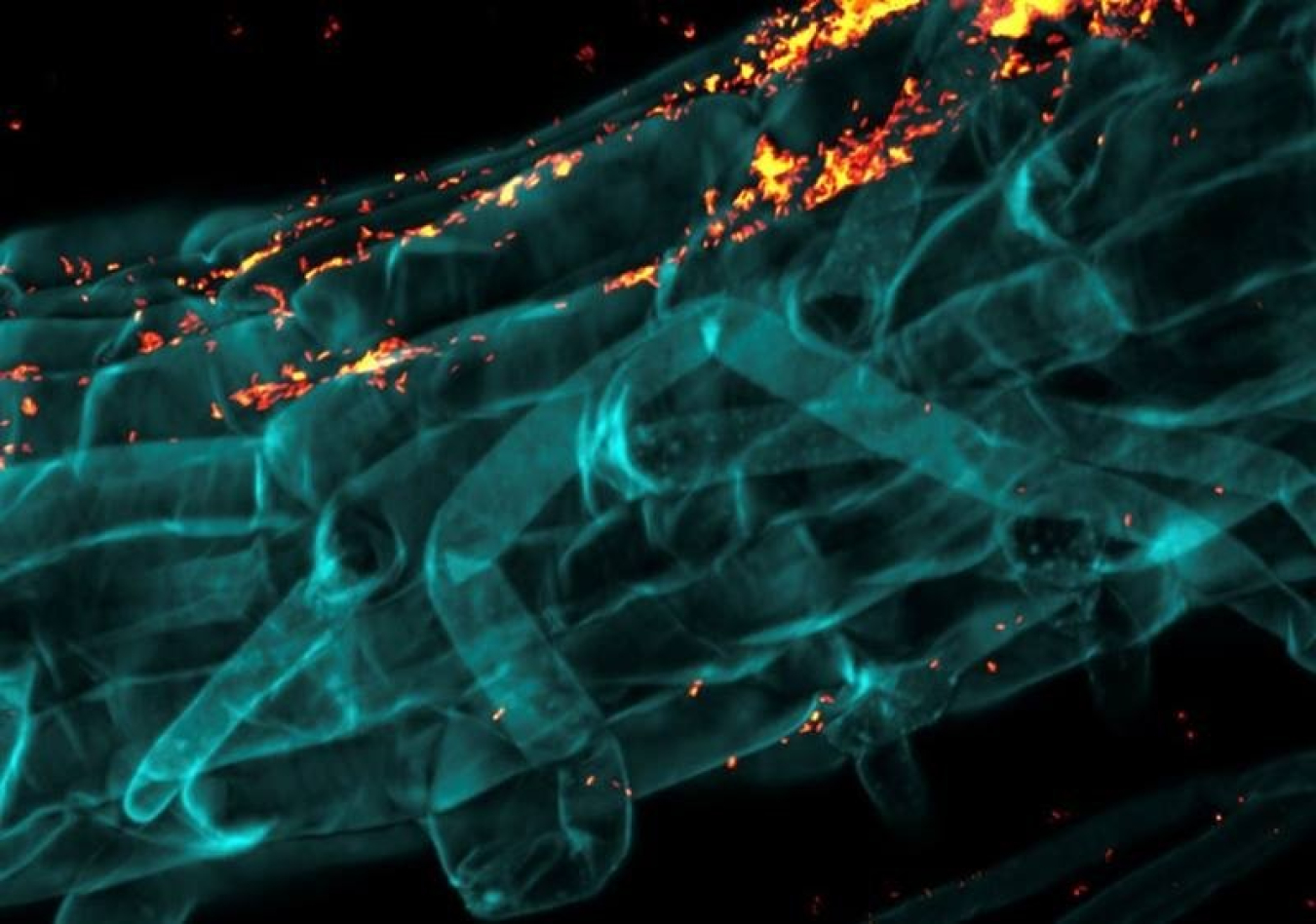USA
July 24, 2024
 A closeup image of a switchgrass root (colored in teal) seen through the lens of a confocal microscope. The fiery orange specks show the fluorescently-labeled microbes that work in tandem with the plant to survive. - Image courtesy of Joseph Edwards, University of Texas at Austin
A closeup image of a switchgrass root (colored in teal) seen through the lens of a confocal microscope. The fiery orange specks show the fluorescently-labeled microbes that work in tandem with the plant to survive. - Image courtesy of Joseph Edwards, University of Texas at Austin
Plants are powerful factories – they can turn basic ingredients like carbon dioxide, water, and sunlight into oxygen, sugars, and plant mass. But plants don’t do all of this work on their own. Below the soil’s surface, plant roots work with tiny microbes to gain access to the nutrients they need to survive. This microbial ecosystem, known as the plant microbiome, has the power to make or break a plant’s success aboveground.
A team of researchers led by the University of Texas at Austin, using resources from the Joint Genome Institute (JGI), a Department of Energy (DOE) Office of Science user facility, investigated how the genetics of a plant can affect its relationship with microbial communities in the soil. Until recently, scientists had a limited understanding of how a plant’s genetic information might influence which microbes get involved belowground. But through this work, they learned how certain genes in a particular plant, switchgrass, play a role in how the plant recruits its microbiome.
Switchgrass is a hardy, tall grass that is extremely drought tolerant. It is able to produce an impressive amount of biomass, which we may be able to convert into sustainable biofuels in the future. Because of this potential, DOE researchers have been studying this plant for nearly two decades. By mapping connections between switchgrass genes and helpful microbes, the researchers aimed to identify which plant-associated microbiota can help the plant grow faster and produce more biomass.
Researchers investigated switchgrass plants grown in field sites in Texas, Missouri, and Michigan. This collaborative group also included scientists from the HudsonAlpha Institute for Biotechnology, the University of Missouri, and Michigan State University. Through genome sequencing efforts at the JGI, the team identified which microbes were present in each of the soil samples. The researchers also pinpointed sections of the plant host genome that are associated with varying amounts of microbes.
This work revealed that the plant genes involved in immunity, development, and signaling were the most influential on the root microbiome makeup. These results provide a better understanding of how plants recruit vital microbes. This information may help researchers as they set out to engineer or breed plant varieties that perform even better in difficult growing conditions.